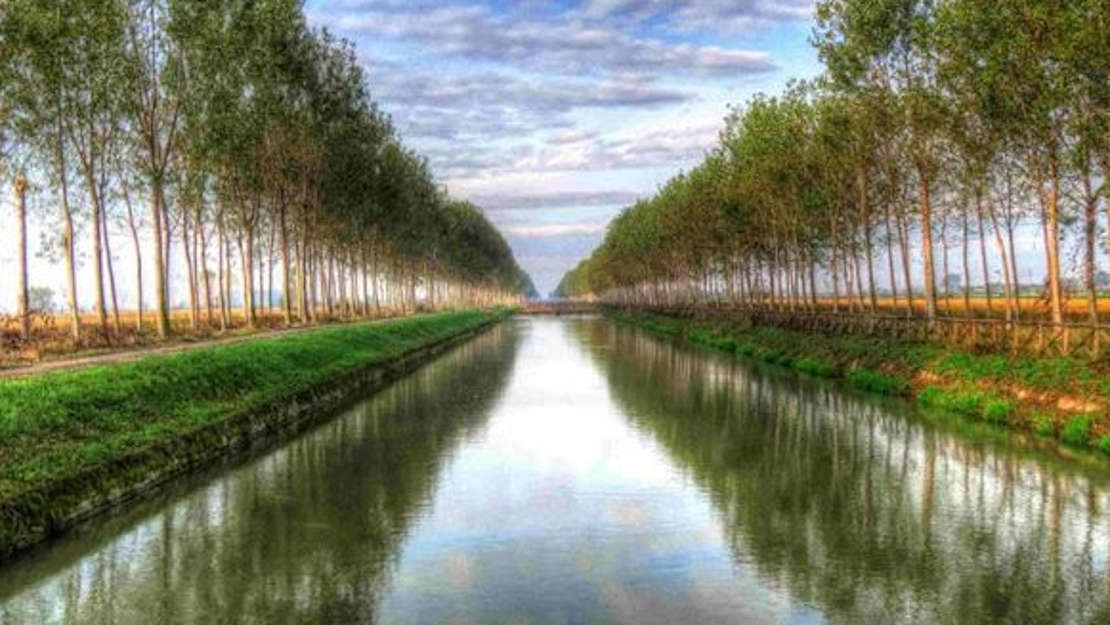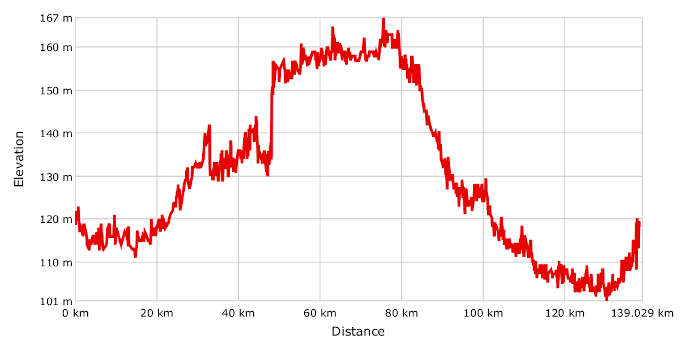
- Bike: trekking
- Difficulty: ***
- Distance: 139 km
- Altitude difference: 66 mWaterways fr
- Total ascent: 559 m
- Total descent: 563 m

Water is a precious resource and Northern Italy has got plenty of it thanks largely to the Alps. The civilisations that have inhabited these lands over the centuries understood its quirks, using resources to supply their settlements and develop their economies. In Milan they spent 700 years building an extraordinary network of canals and natural waterways that links all the surrounding farmland with nearby towns.
In the Renaissance, talented men ‒ among them Leonardo da Vinci ‒ admired and perfected this astounding feat of engineering.
For Leonardo, water was a natural element of aesthetic beauty, with its flows and eddies that dance before the eyes. It appeared in his drawings in the form of flowing, moving waves.
For the 500th anniversary of Leonardo da Vinci's death on 2 May 1519, we are dedicating one of our routes to the waterways running from Milan's famous canals, the navigli, to Monferrato, passing rivers like the mighty Po on the way.
The route can easily be done in a weekend. It crosses the navigli, the Ticino natural park, the cycle paths along Canale Cavour, the wetlands with their rice fields and the paths along the rivers Sesia and Po, before entering Casale, the historic capital of Monferrato.
Set off from Porta Ticinese, in the old Port of Milan, now redeveloped beautifully. Take Alzaia Naviglio Grande, passing through Corsico, Trezzano sul Naviglio, Gaggiano and Abbiategrasso. Here Naviglio Grande takes a northward turn towards Lago Maggiore, passing the Ticino Valley natural park and bringing you to Turbigo. Take the bridge over Naviglio Grande and follow the SS 341 until you arrive at the iron bridge over the River Ticino, which separates Lombardy from Piedmont. Take great care on the bridge. Once you're over it, turn left onto Via Ticino, which crosses Naviglio Langosco. Carry on along Strada Vicinale del Piaggio and Via XXV Aprile and you'll arrive in Galliate. It's here at the first town in Piedmont that the long path along Canale Cavour begins, passing through some beautiful nature. But the route along this great canal is far from straight. You have to deviate from it here and there, first in Novara where the route goes along some urban streets in the neighbourhood of Vignale, north of the town. The second deviation is north of the viaduct at Agognate. This stretch is a favourite of motorbikers from Novara. It's a bit complicated, so it's best to follow your GPX tracker. At the roundabout exit on the SP 299 to Romagnano and take the first track on your left, opposite Tenuta Camiano. A stretch of country road will take you over the railway line and onto another track that goes under the viaduct and back to Canale Cavour.
Go along it for a long stretch, passing the villages of Biandrate and Recetto, after which the canal dug between 1863 and 1866 ends. Little roads used only by tractors will bring you to San Nazzaro Sesia, where it's worth stopping at the 11th-century Benedictine abbey of Santi Nazario e Celso. Once you've had a look, carry on until you get to another waterway, the river Sesia. On the banks you'll find a trattoria where you can try traditional local food. Begin the long stretch on state-owned roads, crossing the Lame del Sesia Natural Park with its thick vegetation and beautiful wetlands, rich in local flora and fauna.
After 15 km along the river bank you'll arrive in Vercelli, a town on the ancient Via Francigena pilgrimage route documented by Archbishop Sigeric. Once you've crossed the river Sesia, head for the neighbourhood of Cappuccini, then leave it for Prarolo, going parallel to the river. This village is known for its castle, built as a Benedictine abbey. The earliest records for it are from 1398. Stop at the Palestro dam on the Sesia, the only strip of land pertaining to Lombardy that extends out into Piedmont on the right-hand side of the river. Get back on your bike and go along the Sesia on the road that takes you to the hamlet of Pizzarosto. This was once linked by a ferry boat to a town called Rivoltella on the other side of the river, also in the province of Pavia.
The route along the river in the Lame del Sesia Park takes you on to Caresana and then Motta dei Conti, where the province of Vercelli ends. You enter the province of Alessandria at Terranova a hamlet of Casale Monferrato. Leave the River Sesia here and start following the mighty Po River.
This route has taken you along the river banks all the way from the navigli of Milan to Casale Monferrato, the historic capital of Monferrato, at the foot of the region's hills.
The route can of course be done in reverse, from Monferrato to Milan.
